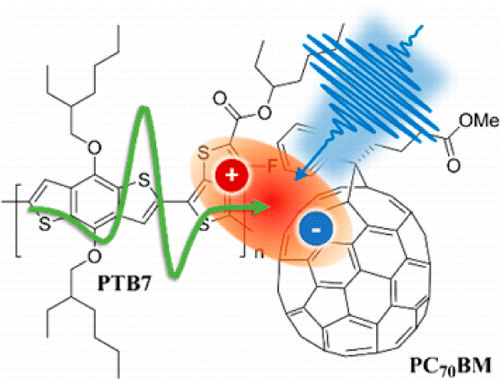
Ultrafast photoinduced carrier dynamics in prototypical low band gap polymer:fullerene photovoltaic blend films PTB7:PC70BM and P3HT:PC70BM is investigated using ultrafast terahertz (THz) spectroscopy. The subpicosecond and few-picosecond decays of THz-probed photoconductivities for both compounds are observed, attributed to the rapid formation of polaron pairs by exciton–exciton annihilation and subsequent polaron pair annihilation, respectively. The transient THz photoconductivity spectra of PTB7:PC70BM are well described by the Drude–Smith (DS) model, directly yielding the important charge transport parameters such as charge carrier density, momentum scattering time, and effective localization. By comparison with P3HT:PC70BM, we find that in PTB7:PC70BM the mobile charge carrier photoconductivity is significantly enhanced by a factor of 1.8 and prevails for longer times after charge formation, due to both improved mobile charge carrier yield and lower charge localization. In PTB7:PC70BM, a strong dependency of electron momentum scattering time on electron density was found, well parametrized by the empirical Caughey–Thomas model. The difference in ultrafast photoconductivities of both P3HT:PC70BM and PTB7:PC70BM is found to correlate very well with the performance of photovoltaic devices based on those materials.